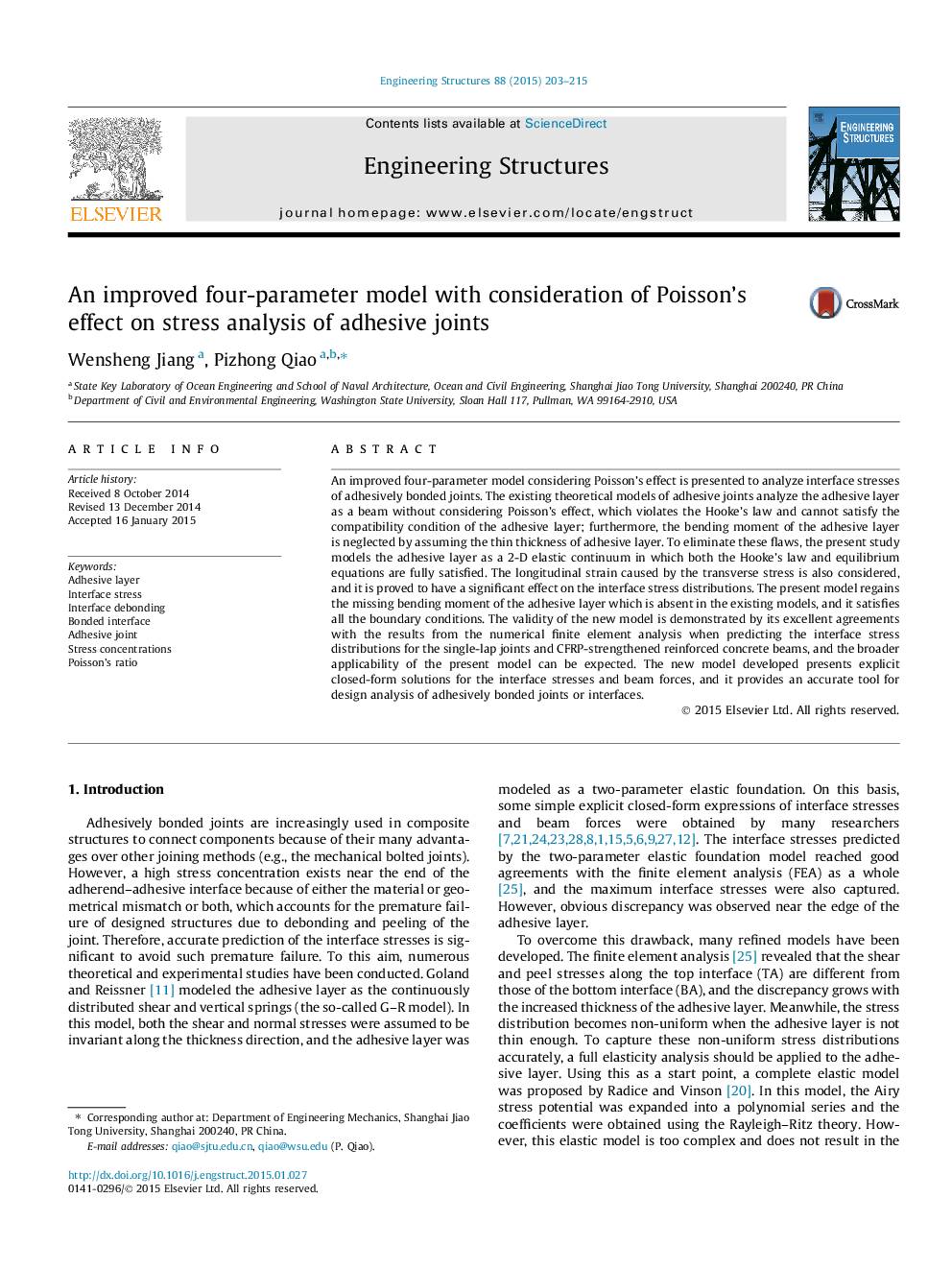| Article ID | Journal | Published Year | Pages | File Type |
|---|---|---|---|---|
| 6740505 | Engineering Structures | 2015 | 13 Pages |
Abstract
An improved four-parameter model considering Poisson's effect is presented to analyze interface stresses of adhesively bonded joints. The existing theoretical models of adhesive joints analyze the adhesive layer as a beam without considering Poisson's effect, which violates the Hooke's law and cannot satisfy the compatibility condition of the adhesive layer; furthermore, the bending moment of the adhesive layer is neglected by assuming the thin thickness of adhesive layer. To eliminate these flaws, the present study models the adhesive layer as a 2-D elastic continuum in which both the Hooke's law and equilibrium equations are fully satisfied. The longitudinal strain caused by the transverse stress is also considered, and it is proved to have a significant effect on the interface stress distributions. The present model regains the missing bending moment of the adhesive layer which is absent in the existing models, and it satisfies all the boundary conditions. The validity of the new model is demonstrated by its excellent agreements with the results from the numerical finite element analysis when predicting the interface stress distributions for the single-lap joints and CFRP-strengthened reinforced concrete beams, and the broader applicability of the present model can be expected. The new model developed presents explicit closed-form solutions for the interface stresses and beam forces, and it provides an accurate tool for design analysis of adhesively bonded joints or interfaces.
Keywords
Related Topics
Physical Sciences and Engineering
Earth and Planetary Sciences
Geotechnical Engineering and Engineering Geology
Authors
Wensheng Jiang, Pizhong Qiao,
